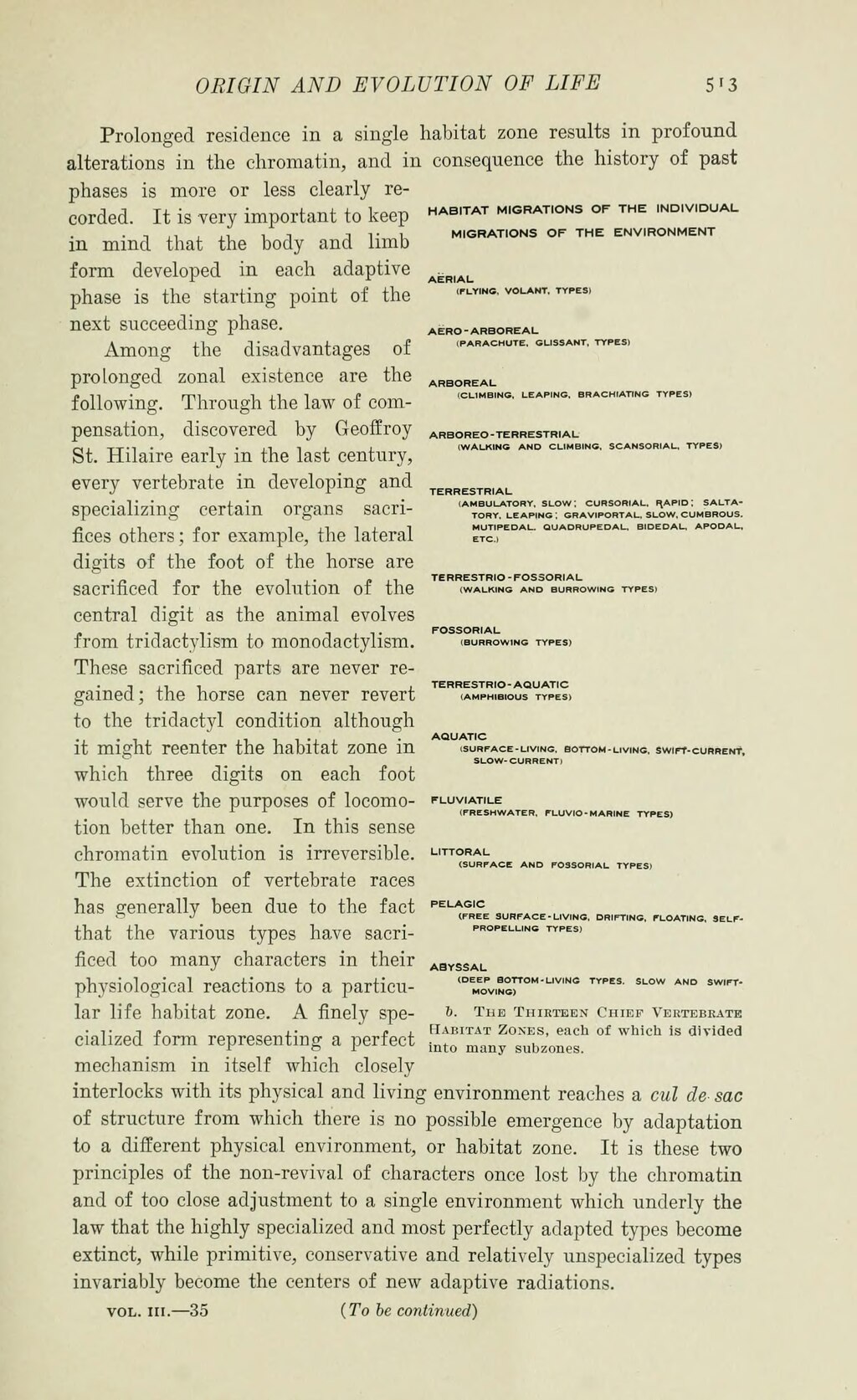ORIGIN AND EVOLUTION OF LIFE
��5^3
��HABITAT MiOflATIONS OP T»K MDIVIDUAL MI0IIAT10NS OF THK ENVIRONHKNT
��(PLTM9. VOLANT.
��(PAIIACHUre.
��(WALKMa AND
��Prolonged residence in a single habitat zone results in profound alterations in the chromatin^ and in consequence the history of past phases is more or less clearly re- corded. It is very important to keep in mind that the body and limb form developed in each adaptive phase is the starting point of the next succeeding phase.
Among the disadvantages of prolonged zonal existence are the following. Through the law of com- pensation, discovered by QeofCroy St. Hilaire early in the last century, every vertebrate in developing and specializing certain organs sacri- fices others ; for example, the lateral digits of the foot of the horse are sacrificed for the evolution of the central digit as the animal evolves from tridactylism to monodactylism. These sacrificed parts are never re- gained; the horse can never revert to the tridactyl condition although it might reenter the habitat zone in which three digits on each foot would serve the purposes of locomo- fluviatil* tion better than one. In this sense chromatin evolution is irreversible, "jtto^al
(Mmr ACC AND
���■TCJ
��AQUATIC TTPKS)
��OURPACC-UVIKMl BOTTOM -UVVM.
��ELAOIC
fnmm ■unrAec-uvMO^
��MOVMg»
��njOATMO, MLP.
��•bOw Alio swirr-
��The extinction of vertebrate races has generally been due to the fact that the various types have sacri- ficed too many characters in their physiological reactions to a particu- lar life habitat zone. A finely spe- ^- thb thibtbkn chief VEKTEBBAn
cialized form representmg a perfect [^^ m^f .^x-oTr °' '"^ " "'"'"' mechanism in itself which closely
interlocks with its physical and living environment reaches a cul de sac of structure from which there is no possible emergence by adaptation to a different physical environment, or habitat zone. It is these two principles of the non-revival of characters once lost by the chromatin and of too close adjustment to a single environment which underly the law that the highly specialized and most perfectly adapted types become extinct, while primitive, conservative and relatively unspeciaJized iypes invariably become the centers of new adaptive radiations. VOL. III.— 35 (To be cmUinued)
�� �
